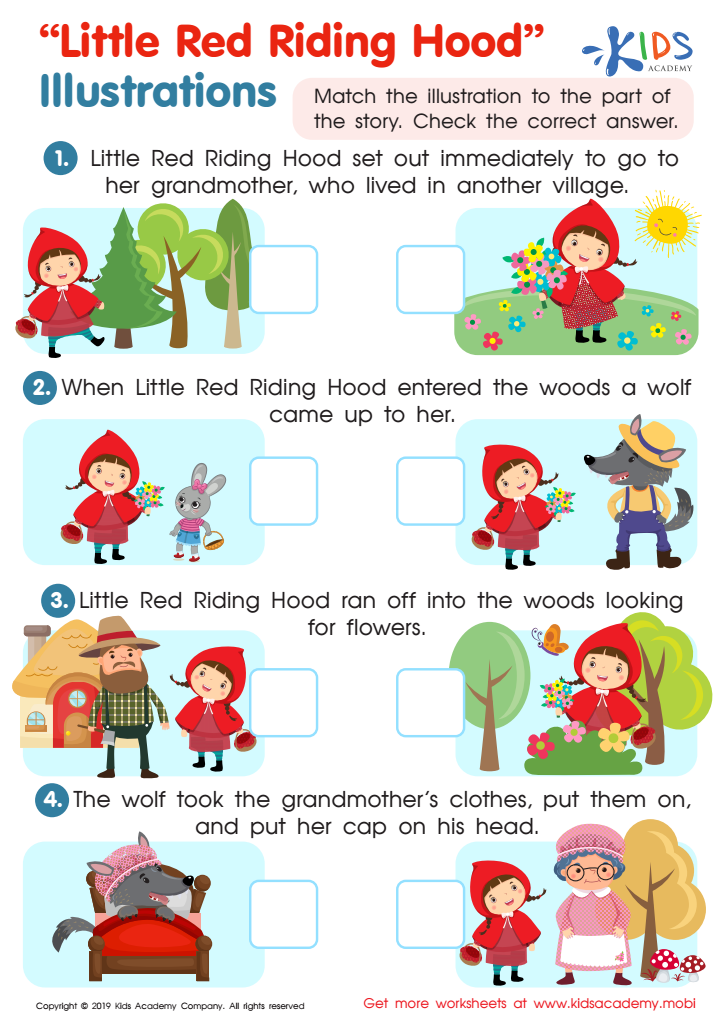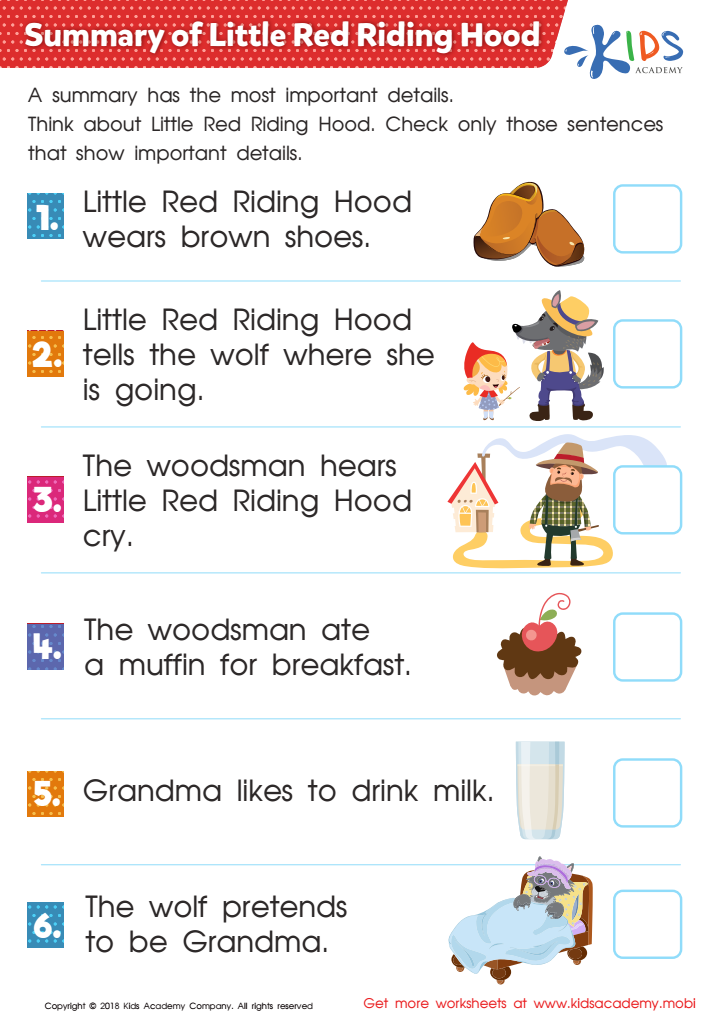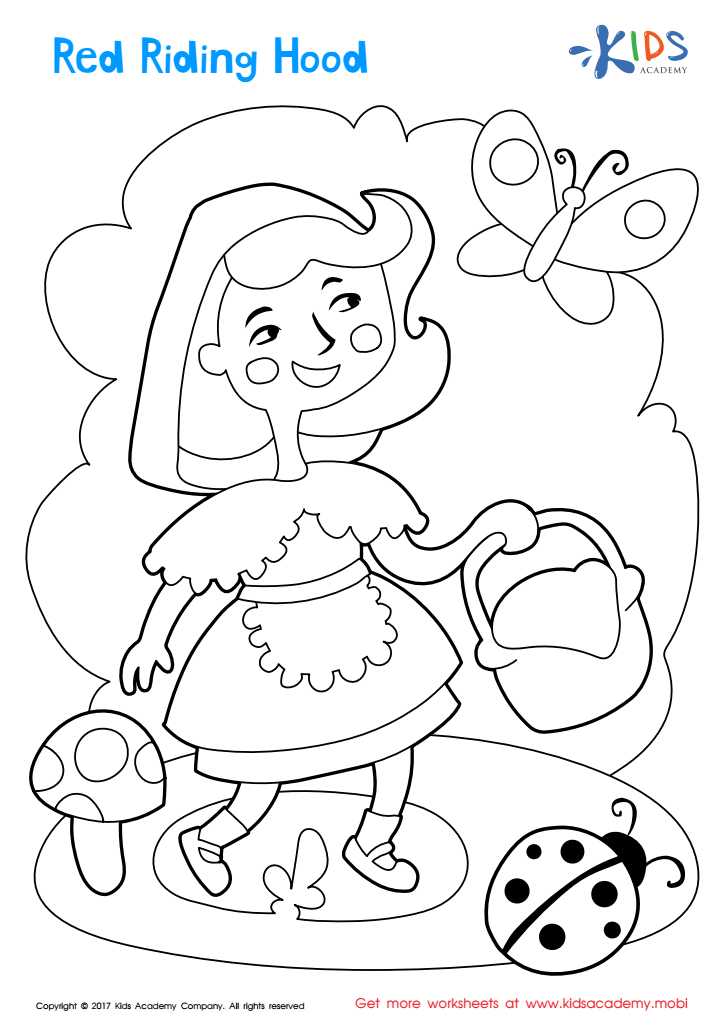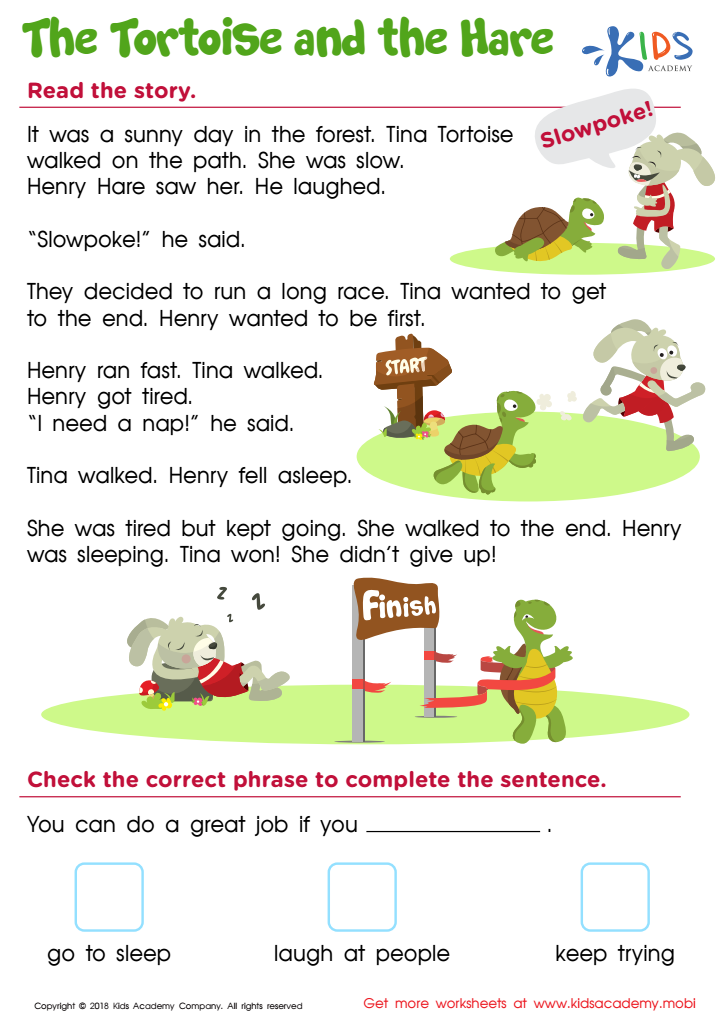Story comprehension Normal Reading Worksheets for Ages 3-9
5 filtered results
-
From - To
Enhance your child's reading skills with our Story Comprehension Normal Reading Worksheets designed for ages 3 to 9. These engaging worksheets provide interactive and fun formats tailored to various developmental stages. Through reading comprehension activities, children will improve their understanding of stories, learn to identify main ideas, and develop prediction skills. Each worksheet is crafted to foster a love for reading while building essential literacy capabilities. Ideal for home or classroom use, our resources help young readers tackle basic concepts with confidence. Explore our collection to empower your child on their literary journey and lay a strong foundation for future learning!


Little Red Riding Hood: Illustrations Worksheet


Summary of Little Red Riding Hood Worksheet


Red Riding Hood Coloring Page


Story Sequencing Printable


The Tortoise and the Hare Worksheet
Story comprehension is a vital skill for children aged 3-9, laying the foundation for their literacy development and overall academic success. For parents and teachers, fostering strong comprehension skills means encouraging critical thinking, creativity, and a love for reading. When children understand stories, they are better equipped to interpret messages, make connections with their own experiences, and engage with the world around them.
Moreover, comprehension improves vocabulary development, enhances memory, and supports social-emotional skills by allowing children to empathize with characters and explore different perspectives. By guiding young readers in understanding story structures, themes, and character motivations, adults play a crucial role in building these essential skills.
Furthermore, comprehension supports later academic achievement, leading to improved performance in reading, writing, and other subjects. It can enhance children’s ability to follow instructions and express their thoughts clearly. Engaging with stories also stimulates imagination, making learning enjoyable and relatable.
Ultimately, prioritizing story comprehension in early childhood education sets the stage for lifelong success in literacy and learning, making it essential for both parents and teachers to emphasize this critical aspect of early development.
 Assign to My Students
Assign to My Students
















